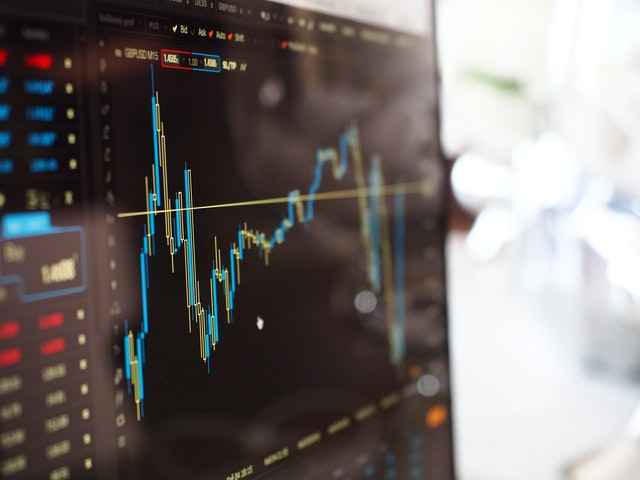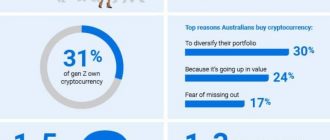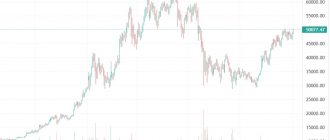Bitcoin trading has proven to be a lucrative way of making money off the crypto market. But what exactly is Bitcoin trading and how do investors use this popular cryptocurrency to make so much profit? In this article, we’ll review precisely how Bitcoin trading works and what makes Bitcoin so profitable to investors.
What is Bitcoin trading?
Bitcoin trading, at its most basic, involves buying Bitcoin when it’s low and selling it at a higher price later. This sounds a lot like the Bitcoin investment technique called hodling.
When it comes to cryptocurrency, a lot of individuals have a hard time distinguishing between investing in Bitcoin and Bitcoin trading. While the basic principles of both are the same, there is a significant difference.
Trading can be seen as a series of short-term investments done to profit from the current market environment quickly. Bitcoin investments, known by the slang HODling, in the real sense, have more to do with long term aims. Investors buy a certain amount of cryptocurrency and hold on to it, hoping it’ll greatly appreciate it in the future. At the heart of both of them is the same underlying goal, buy low and sell high.
Advantages and disadvantages of Bitcoin trading
Pros
- High potential profitability: Bitcoin has shown itself to be one of the most potentially volatile (and potentially profitable) investments of the last decade. Nothing illustrates this point better than 2017, where the price of Bitcoin went from $900 to $20,000 in a single calendar year, making millions for investors.
- Transactional freedom: The very nature of Bitcoin means that it is perfect for international trade. Cryptocurrency trading is not restricted by borders or most governments. It cannot be hindered by burdensome fees and regulations. Anybody interested is allowed to have a slice of the market.
- Transparency of information: The blockchain ledger makes Bitcoin trading fully transparent as every transaction is decentralized and recorded on the Bitcoin ledger by several independent unbiased parties. This system makes it extremely hard for a fraudulent individual to steal Bitcoin directly from the ledger without gaining access to the Private Key of your crypto wallet.
- Control and security: At the infancy of Bitcoin trading, security was something of an issue because so many people and businesses jumped into it without fully understanding the system. Now, most people have learned their lesson (though painfully) and only deal with reputable trading platforms with top-notch security and user insurance. Various methods like Private wallet Keys, Two Factor Authentication, and Know Your Customer policies have been put in place to checkmate fraud and tighten user asset security.
- Finite supply: What drives the values of a currency is its demand and scarcity. If the currency were minted indefinitely, it would soon lose value because of inflation. The same principle applies to cryptocurrencies like Bitcoins. The maximum number of Bitcoins that can be produced is capped at 21 million. The aim of this is to make sure the price of Bitcoin can never be affected by inflation. The last Bitcoin is expected to be mined around the year 2040.
- Increasing liquidity: Every day, even more people see Bitcoin as a viable means of exchange. More businesses are now accepting Bitcoin as a means of payment for services rendered. This means that Bitcoin is becoming less of a technological novelty and more of a hard asset.
Cons
- Fraud: Die to the fact that Bitcoin is a new, untapped market, there are many loopholes to straighten out. Hackers and other fraudulent individuals use this to exploit users and defraud them of their assets. All this has made Bitcoin trading seem like a potentially shady business venture.

- Volatility: As everyone knows, Bitcoin and all cryptocurrencies, in general, are incredibly volatile commodities. While this high-profit environment is one of the most attractive features of Bitcoins, it is also one of the most dangerous. This means that users also stand a chance of losing a significant amount of money to price fluctuations. Various factors affect the price of Bitcoin both in and off the market.
- Underdevelopment: The crypto market is still in its adolescence and not yet fully understood. Most users don’t fully understand how it works, and even experts can do nothing but shake their heads when it goes contrary to what they expected. Many individuals do not see Bitcoin as a viable investment due to our lack of understanding of the platform.
What moves the price of Bitcoin?
Ask anybody with a basic knowledge of economics what controls the price of a commodity. The first answers you’re likely to get is demand and supply. While to a large extent, that is correct, various other factors have a significant impact on the price of a digital commodity such as Bitcoin:
- Demand: As simple as this may sound, the basic idea of demand is a thesis alone. For the sake of this article, we’ll make it as simple as possible if the number of people trying to purchase Bitcoin outweighs the available supply of Bitcoin, the price rises and vice versa. This is why the price of Bitcoin has been rising as people gain interest, and it is used more frequently in our everyday transactions, but its supply remains constant. This brings us to the next factor
- Supply: This also essential to determine if the price of a commodity is its supply. If there is too much of a product available, the market becomes saturated, and the price drops. To avoid this, Bitcoin has come up with two essential solutions: a finite amount of coins and a production process that controls the amount of Bitcoin that can be released at a constant rate. This helps provide just enough Bitcoin to allow it to be a feasible means of exchange but not enough to reduce its value.
- Speculation: Just like any other stock or security, speculation and investor confidence dramatically affect Bitcoin’s value. Various government and corporate policies go a long way in influencing the way people view Bitcoin’s viability as a feasible means of exchange. A good example would be the increase in user confidence, as evidenced by bumps in Bitcoin’s price as more major businesses adopt it as a legal means of payment.
- Finite source: This factor is also closely tied to the supply of the cryptocurrency. The supply of Bitcoin is capped off at 21 million units. This means 21 million Bitcoins will ever be mined. This is an anti-inflationary measure to make sure the price of Bitcoin can only go up.
- Cost of mining: Mining Bitcoin is not cheap. It requires a lot of specialized machinery, software, and, most importantly, electricity. With the recent halving of Bitcoin earlier this year, Bitcoin miners only get half the amount of Bitcoin they usually receive from mining the Blockchain. An increase in the cost of producing Bitcoin is likely going to drive the price of Bitcoin higher.
The Best Bitcoin Trading Strategies

Day trading
As the name implies, day trading involves making multiple short term trades based on the anticipated movement in the price of a particular commodity based on market speculation.
It’s an excellent strategy for users who wish to respond to short-term opportunities in the bitcoin market to develop news or emerging patterns.
It requires an in-depth knowledge of the market, technical skill, and high capital to be carried out successfully, but can be quite profitable if done right.
Scalping
This is great for traders who want to put themselves in a position to make small, continuous profits, rather than wait for one significant breakout or breakdown.
Scalping is a trading style specializing in profiting off small price changes, generally, after a trade is executed and becomes profitable. It requires a trader to have a strict exit strategy because one substantial loss could eliminate the many small gains the trader worked to obtain.
It is best for traders with the right tools such as a live feed of market statistics and analysis, a direct-access broker, and the stamina to place many trades within a trading day.
Swing Trading
Swing trading involves holding stocks for much longer than day trading or scalping. Traders predict market trends and aim to make profits by trading at the beginning or end of a trend.
The significant difference is swing trading often involves at least an overnight hold, whereas day traders close out positions before the market closes. Day trading positions are limited to a single day, while swing trading involves holding for several days to weeks.
Swing Trading is a strategy for traders who want to capitalize on opportunities from market momentum and understand how market trends work over the long run.
Automated Trading

This option is excellent for those who wish to make passive income or do not understand the nature of Bitcoin trading but are still interested in profiting from it.
Automated trading makes use of a Bitcoin robot, which is a unique software program developed to buy and sell bitcoin on behalf of a trader. It uses powerful analytical technology to observe market signals and predicts the most profitable moments to make trades based on the trends it observed
Bitcoin robots are said to be much better at predicting favorable trades than people and are quicker. Trading bots are said to have a much higher success rate than human traders. However, this trading method has many disadvantages, such as fraud, exaggerated claims, lousy trading strategies, etc.
Bitcoin trading is a great way to make some income, but new traders should make sure they take out time to understand the more technical aspects before diving. Remember to start small and always trade responsibly.
Best Autotrading platforms
- Bitcoin Revolution review
- Bitcoin Evolution review
- Bitcoin Profit review
- Bitcoin Compass review
- Crypto Profit review
- The Bitcoin Trader review
- Crypto Revolt review
- Bitcoin Circuit review
- Crypto Nation review
- Corona Millionaire review
- The Wealth Matrix review
- Immediate Edge review
- BTC Bank Breaker review
- Crypto Comeback Pro review
- BTC Era review
- Bitcoin Superstar review
FAQs
- Can I Trade Cryptocurrencies in The US or UK?
Of course, many trading platforms offer their services to users in the US, and the UK Here is a list of some of the best trading platforms and where they operate.
- How Much Do I Need to Get Started Trading Cryptocurrencies?
That depends on the trading platform you use. Some trading platforms allow users to register with no funds, while others require minimum deposits ranging from as little as $100 to over $1000.
- Is Bitcoin Trading Safe?
While Bitcoin trading has gotten some bad press due to fraud and theft, things seem to be turning around. Investors need to study potential trading platforms carefully to ensure their security standards are top-notch.
- What is the best crypto trading platform in 2020?

While there are a lot of great trading platforms out there, a Binance has at the top as the best trading platform of 2020.
- What is the best way to trade bitcoin?
There are several ways to trade Bitcoin. You can either trade directly with your coin, trade through CFD’s, or deal on crypto-based products like EFT’s and EPD’s.
- What is the best strategy for crypto trading?
Several popular Bitcoin trading strategies include hodling, hedging, trend trading, and breakout trading. Each has its pros and cons.
- Robinhood crypto day trading;
- Trading bitcoin for beginners;
- Forex and crypto trading;
- How to Trade Bitcoin?
Conclusion
Trading with Bitcoin is quite easy. Purchase the currency from a trusted exchange and then sell it at a higher price for either more of the first currency or another cryptocurrency.







